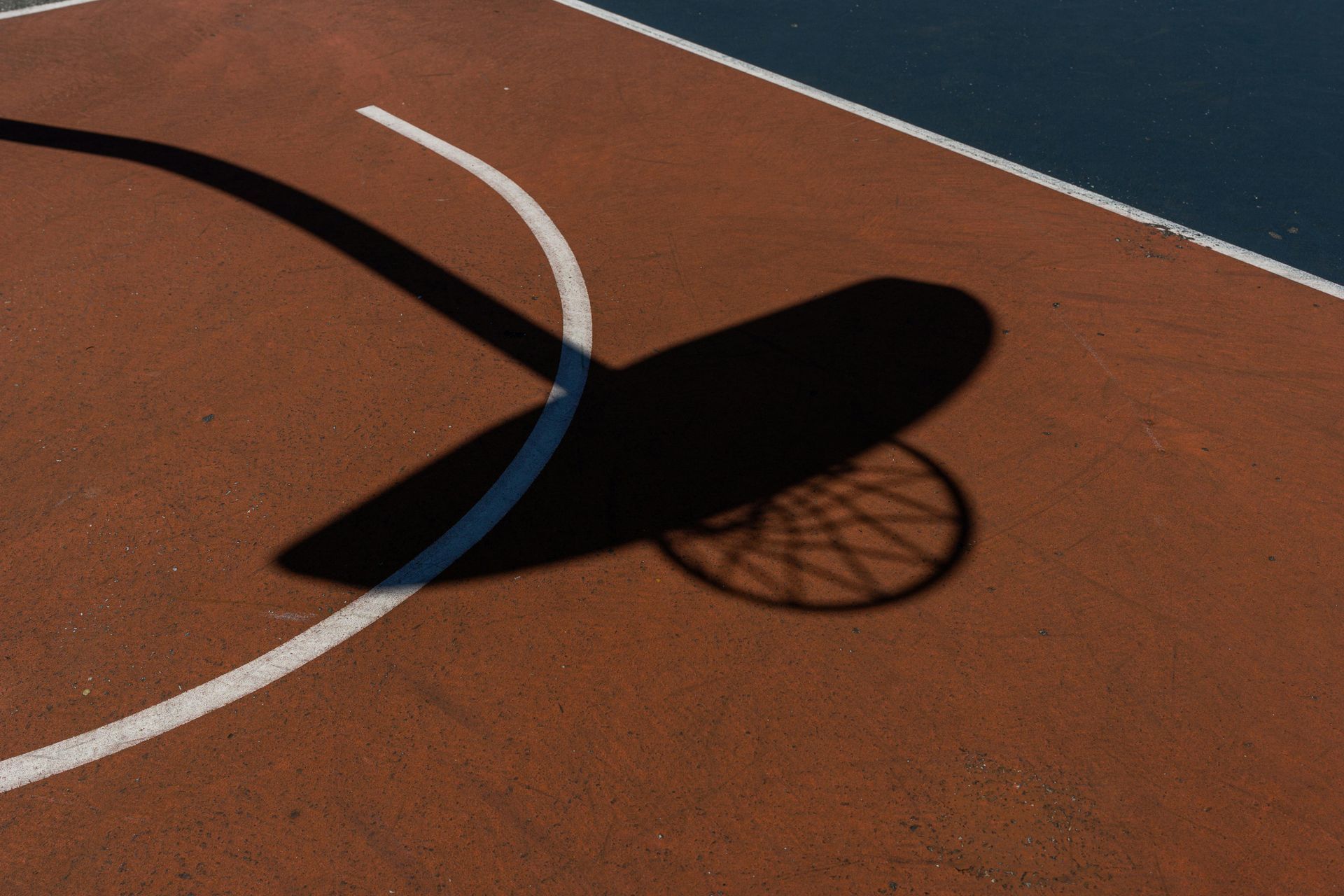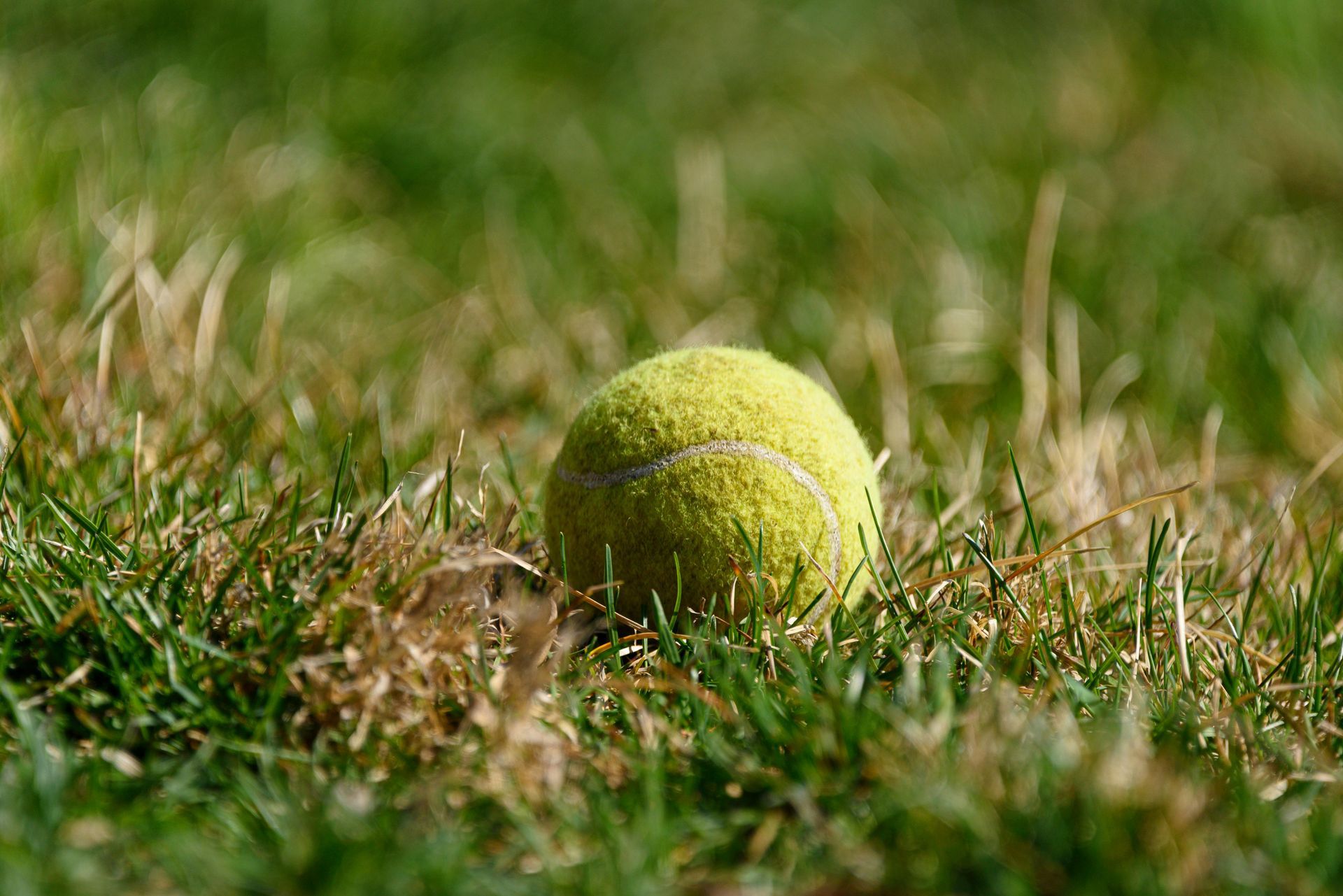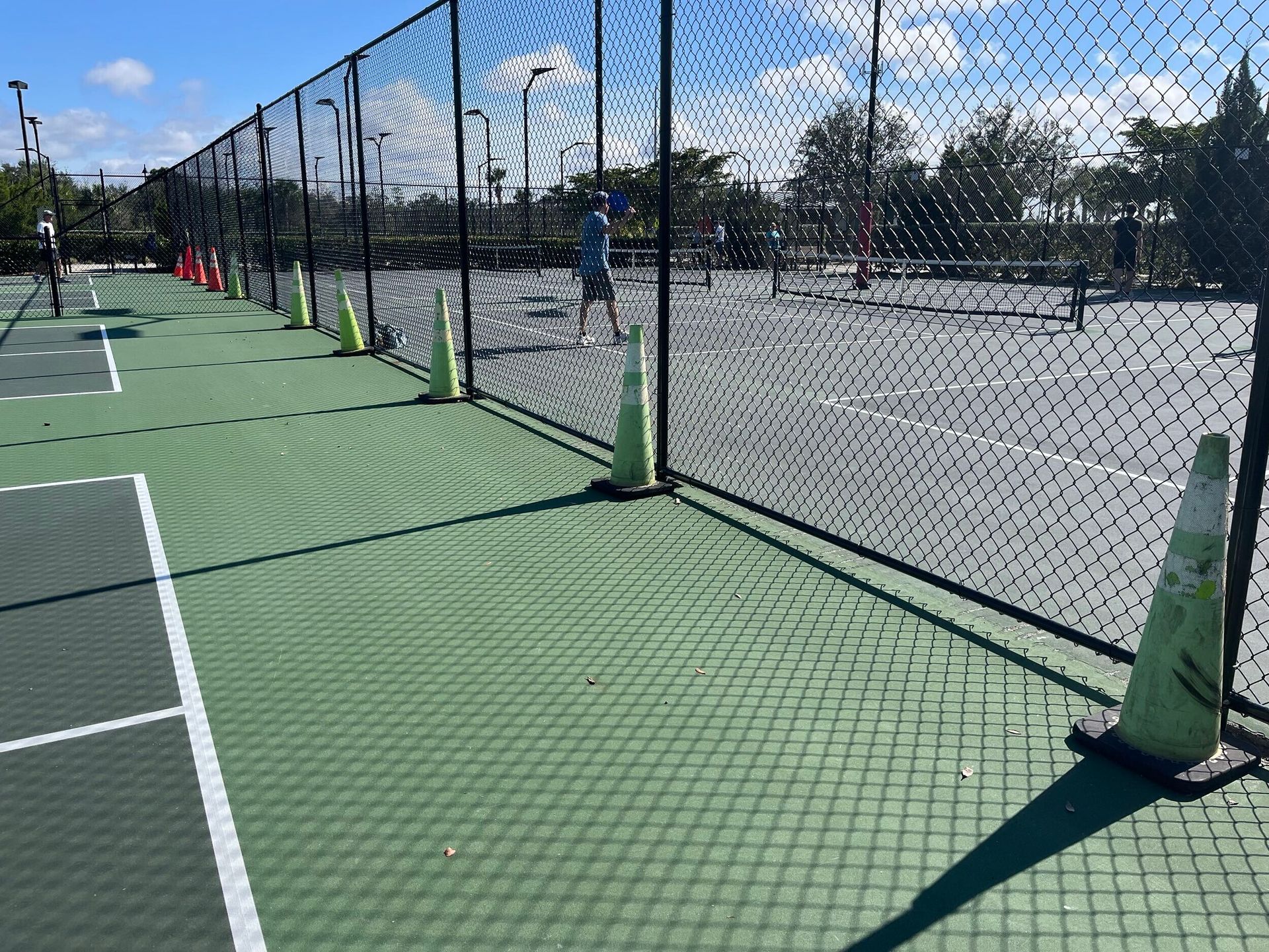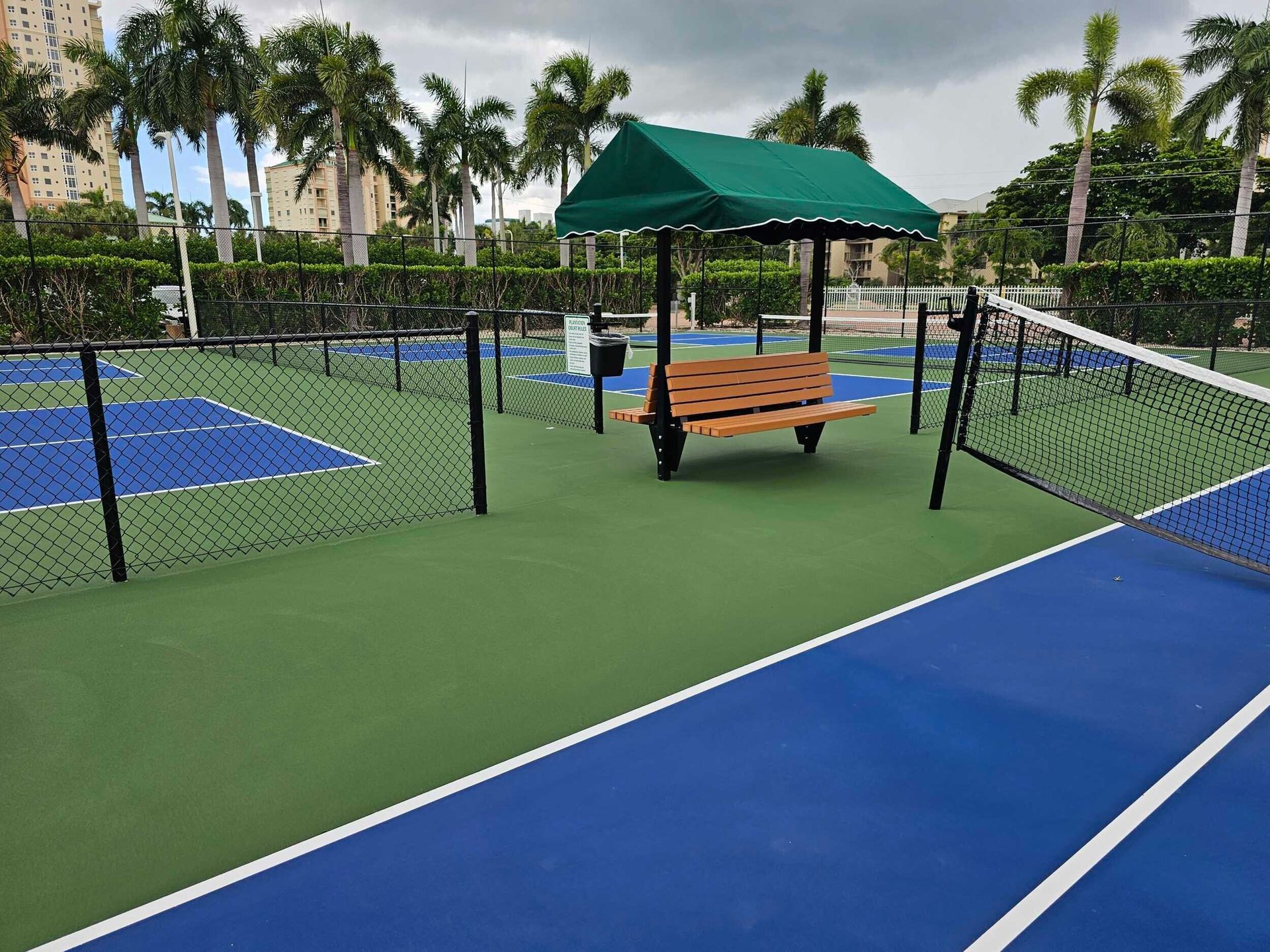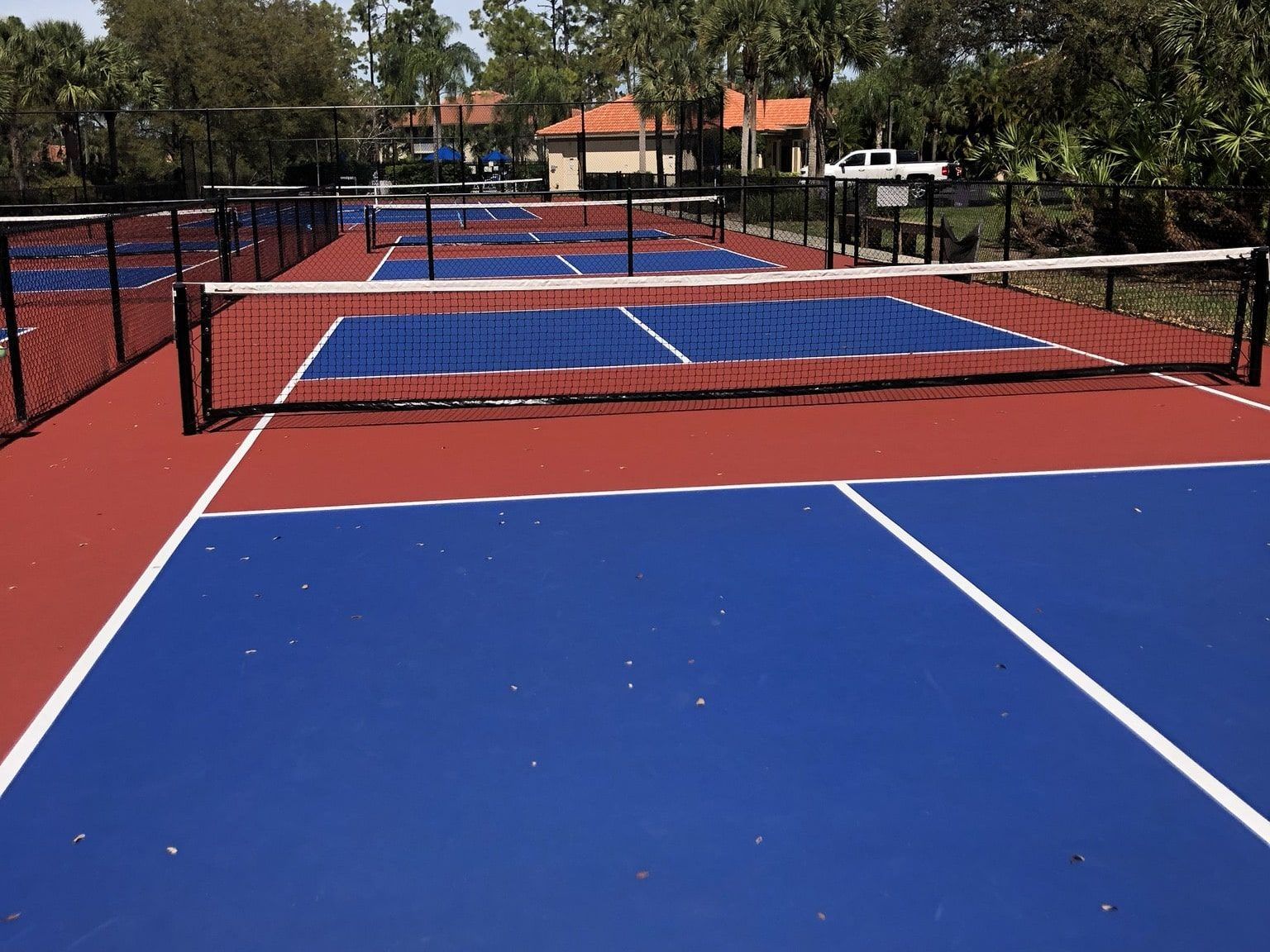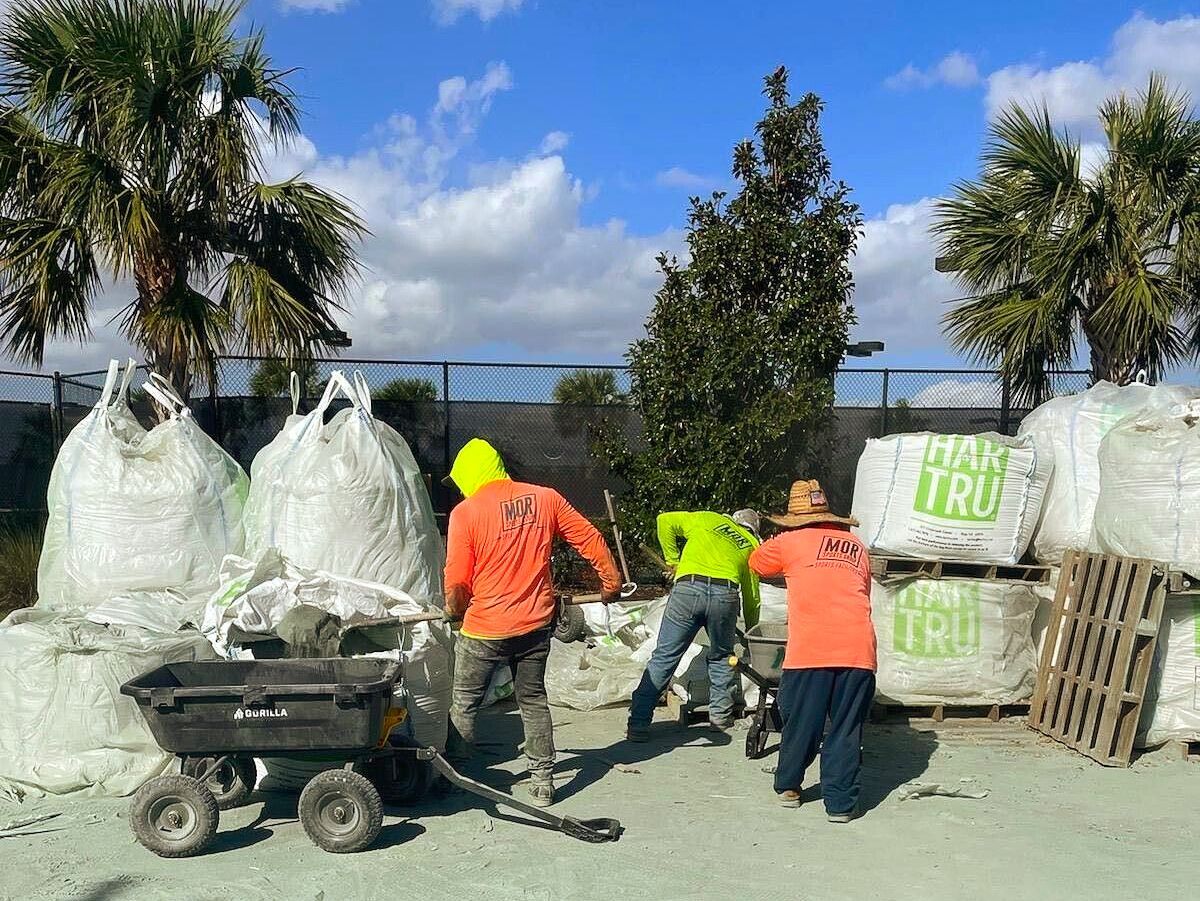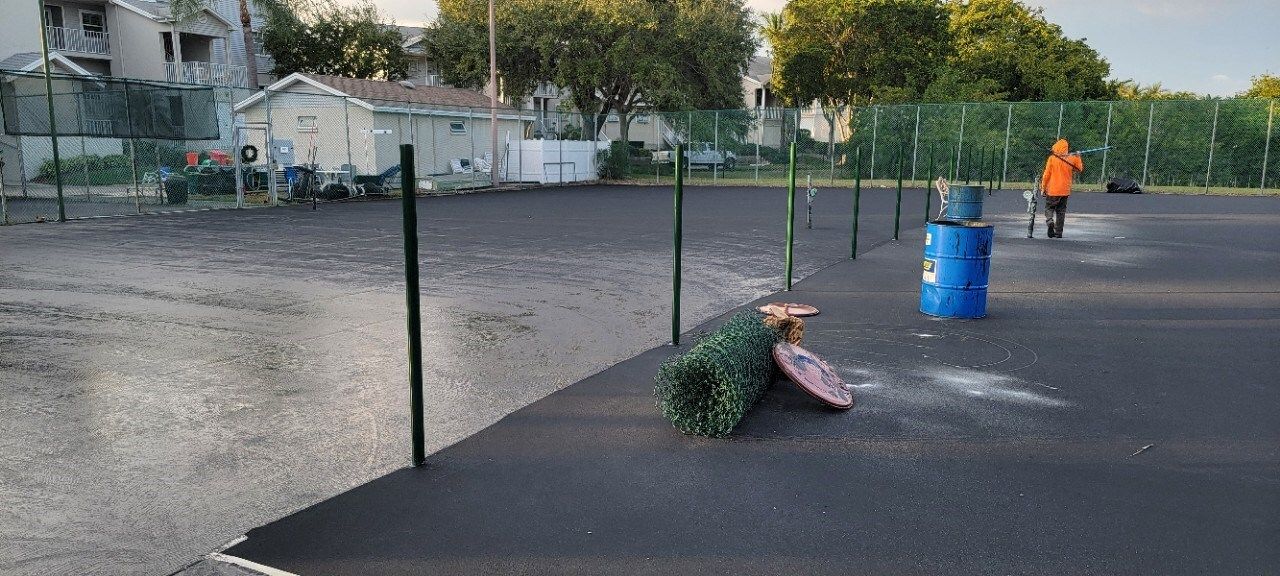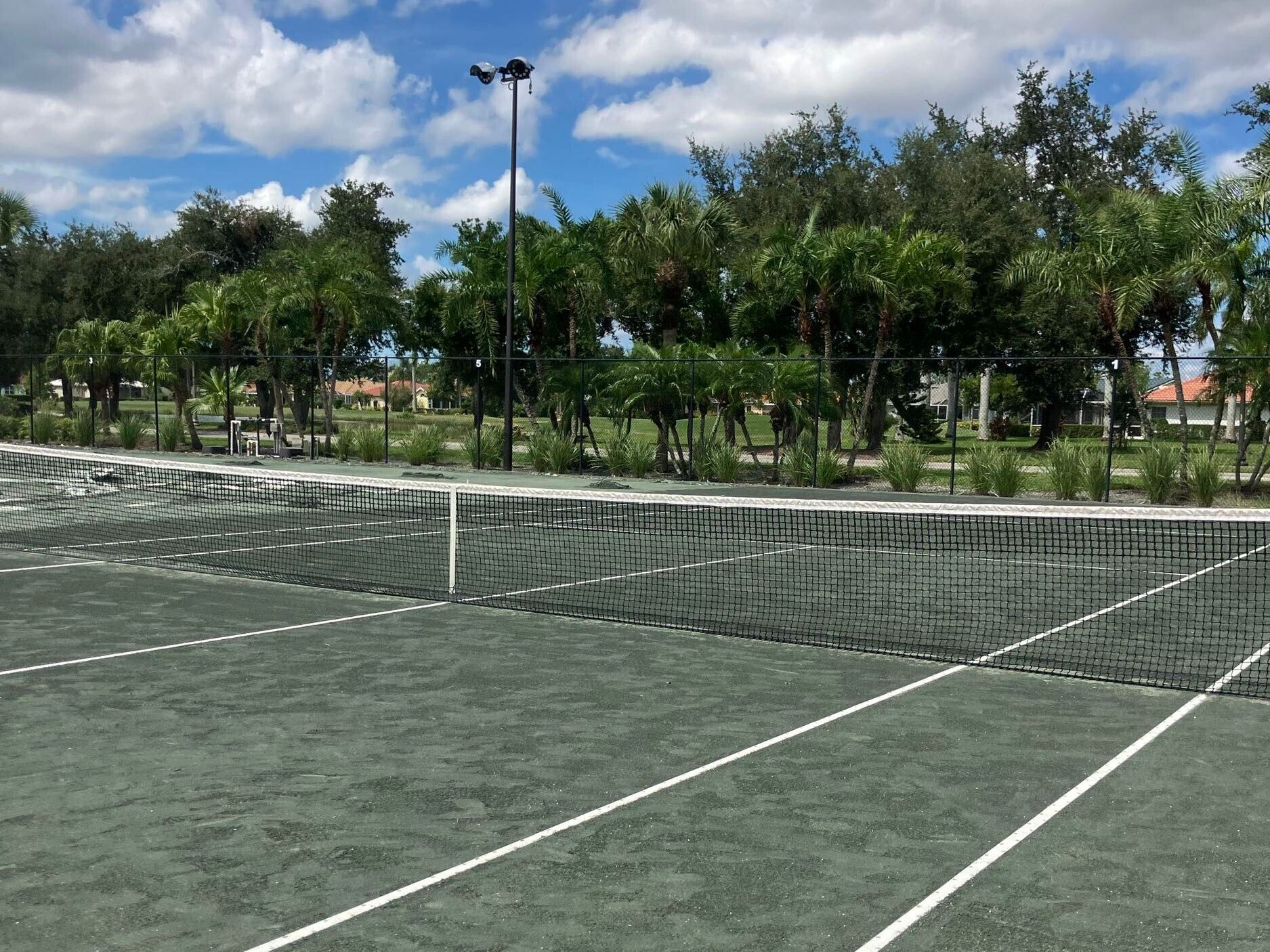Pickleball Court Construction: The Ultimate Guide
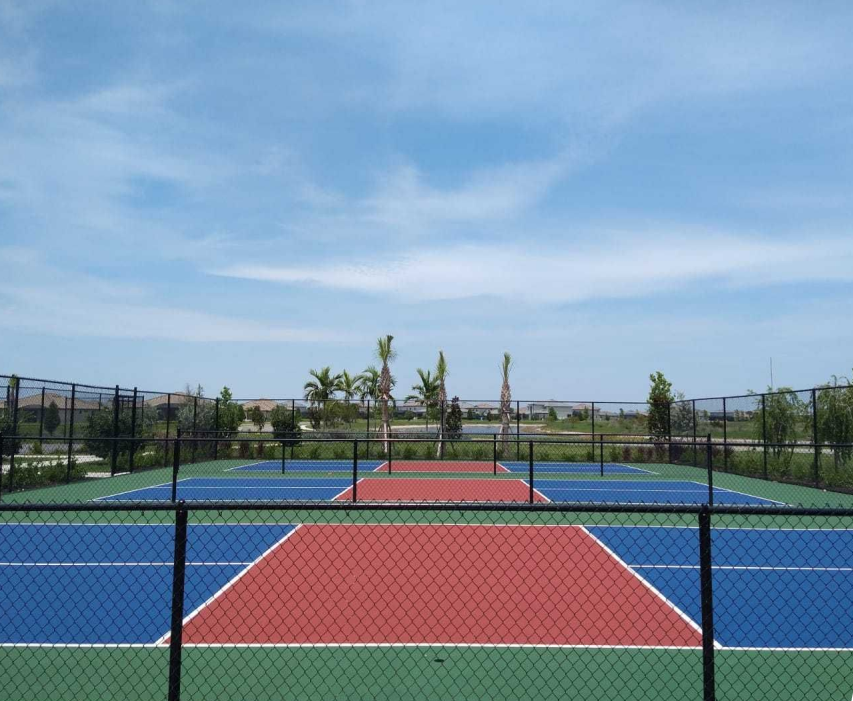
Caught the pickleball fever, and you’re thinking about building a court? You’re not alone. In this guide, we’re walking you through everything from official court sizes and surface types to lighting, fencing, and accessories so you can make the right decisions and get the most out of your new court.
Why Build a Pickleball Court?
Pickleball has become the fastest-growing sport in America. It’s a cross between tennis, ping pong, and badminton; easy to pick up, low-impact on joints, and fun for people of all ages. The rise in popularity is no surprise: all you need is a paddle, a ball, and a court. That’s it. And with demand rising fast, now is a great time to invest in one.
A well-constructed court is more than a playing surface. It’s a social hub, a wellness booster, and, depending on your setup, a real estate or business value enhancer.
Who Benefits from a Pickleball Court?
- Homeowners looking to create a backyard oasis for family fun or social gatherings.
- Recreational facilities expanding amenities to attract more users
- Schools and universities diversifying their athletic programs
- Municipal parks promoting healthy, inclusive activities for all ages
- Businesses like resorts, hotels, and country clubs want to offer unique experiences to guests
Pickleball courts can host leagues, classes, open play sessions, or tournaments. Their versatility makes them a smart, future-proof investment.
Pickleball Court Dimensions and Layout
If you’re serious about the game, your court needs to meet the proper dimensions. Pickleball doesn’t take up as much space as tennis, but if your layout is off, it can throw off the entire game experience.
Court Size
When designing a pickleball court, getting the dimensions right is crucial. Proper sizing ensures fair gameplay, player safety, and compliance with regulation standards, especially important for tournament play or public facilities.
Here’s a breakdown of standard and tournament-level dimensions:
- Standard Court Size: 20 feet wide by 44 feet long (for both singles and doubles). This is the official playing size for both singles and doubles play. It matches USA Pickleball standards and ensures consistent performance and fair competition.
- Recommended Play Area: 30 feet by 60 feet (includes player movement space). This includes buffer zones around the playing lines, typically 5 feet on the sides and 8 feet behind the baselines. These clearances are critical for player movement, safety, and game flow, especially during aggressive returns or extended rallies.
- Tournament Court Area: 34 feet by 64 feet. Used for professional-level installations or facilities expecting frequent play. The extra space allows for comfortable movement, room for fencing, spectator seating, benches, and even ADA-accessible paths or shaded areas.
If you're working with limited space, stick to the minimum play area. But if you’re building a professional or public court, go for the tournament-grade size to ensure comfort and safety.
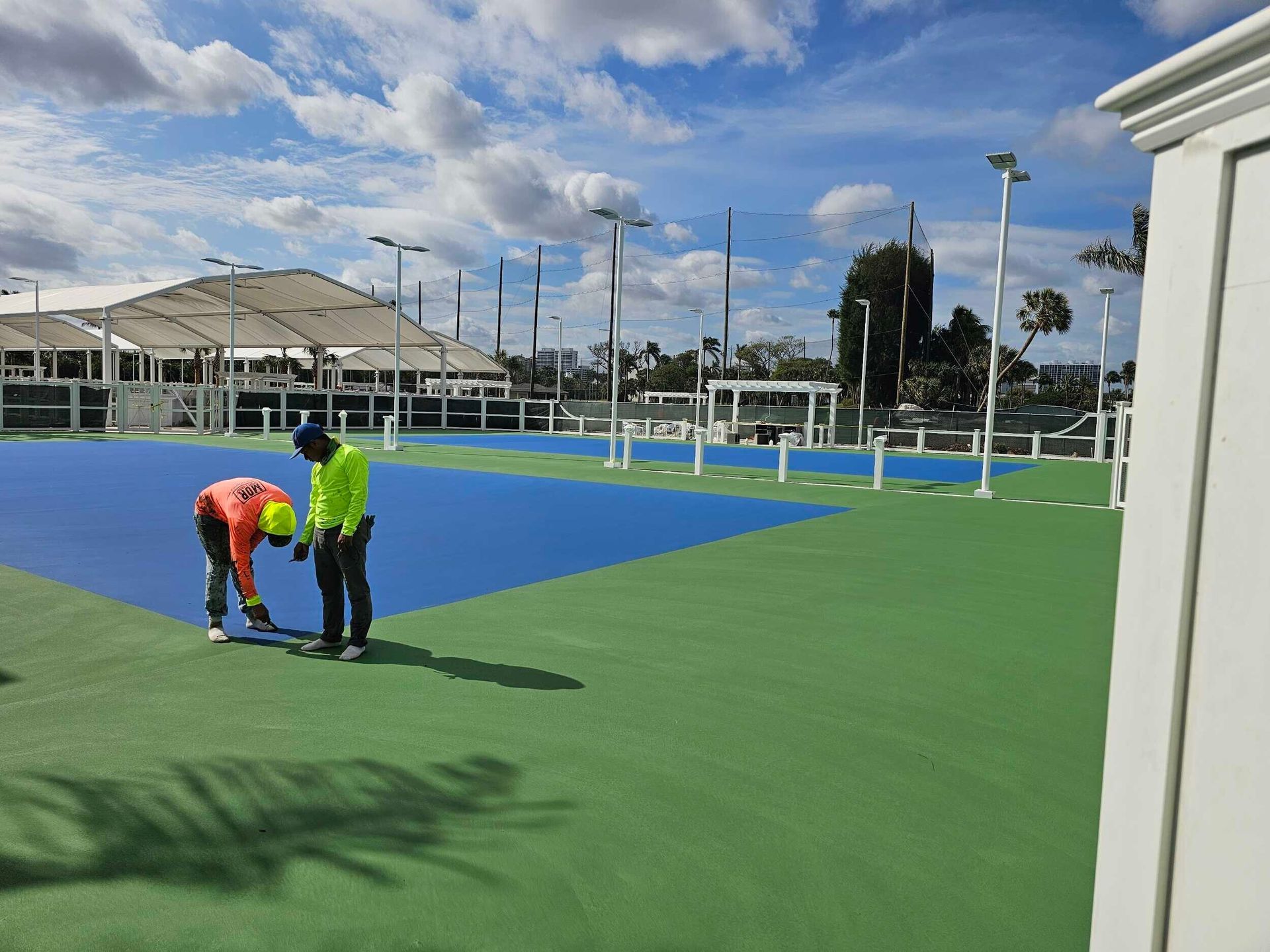
Court Zones and Lines
Painting accurate court lines is key to gameplay. Here are the essential parts:
- Baselines – Run along the back of the court, parallel to the net
- Sidelines – Run along the sides of the court
- Non-Volley Zone (Kitchen) – 7 feet from the net on both sides where players can’t volley
- Centerline – Splits each side’s service box into left and right
- Service Boxes – The two zones on each half of the court where serves must land
Visit USA Pickleball for a full-court diagram and detailed specifications.
Indoor vs. Outdoor Pickleball Courts
Choosing between building an indoor or outdoor pickleball court is one of the first and most important decisions you'll need to make. Your local climate, available space, long-term goals, and budget all play a role in determining the right option. Each setup has distinct advantages and limitations, and understanding both will help you plan a court that fits your needs and offers lasting value.
Outdoor Pickleball Courts
Outdoor courts are the most common type of pickleball court and are widely used in public parks, schoolyards, and residential neighborhoods. If you already have access to an open space, such as a backyard, tennis court, or empty parking lot, building outdoors can save on construction costs and speed up the process.
Best suited for:
- Warm or temperate climates
- Recreational or seasonal use
- Community centers and municipalities with open land
- Residential projects with existing outdoor space
Advantages of Outdoor Courts:
- Natural lighting: Outdoor courts make full use of daylight, which means no electrical setup or lighting installation is needed for daytime play.
- Lower upfront costs: Building outdoors requires fewer structural components. If a concrete or asphalt slab already exists, it can often be resurfaced and repurposed.
- Great for community access: Cities, schools, and HOAs often choose outdoor courts for public use because they’re relatively affordable and can accommodate multiple players with minimal upkeep.
Challenges of Outdoor Courts:
- Weather dependency: Rain, snow, extreme heat, and wind can interrupt or limit play. In areas with harsh seasons, courts may go unused for several months unless protected by a roof or covering.
- Higher maintenance: UV rays, temperature shifts, and moisture can deteriorate surfaces over time. You’ll need to repaint lines, resurface regularly, and clean the court to prevent mold, dirt buildup, or cracking.
- Noise concerns: Pickleball can be loud. The sound of the paddle hitting the plastic ball echoes and may bother neighbors if your court is close to residential areas. Sound barriers or acoustic fencing may be needed.
Common outdoor surfaces:
- Concrete
- Asphalt
- Snap-together tile systems (installed over a base)
Indoor Pickleball Courts
Indoor courts are typically found in gymnasiums, multi-sport facilities, recreation centers, or purpose-built buildings. While they cost more to build and maintain, they offer year-round use and more controlled playing conditions. This makes them ideal for high-traffic facilities, colder regions, or businesses aiming to host leagues and events.
Best suited for:
- Cold climates or regions with unpredictable weather
- Facilities offering lessons, tournaments, or paid access
- Schools, universities, and fitness centers seeking consistent use
- Developers converting warehouse or gym spaces into multi-court complexes
Advantages of Indoor Courts:
- Year-round availability: Indoor courts aren’t affected by weather. They offer reliable scheduling and uninterrupted play throughout the year.
- Consistent playing conditions: With no wind, sun, or rain to consider, gameplay is consistent. Lighting, temperature, and surface bounce remain predictable, which is ideal for leagues or tournaments.
- Extended surface lifespan: Indoor surfaces don’t deal with UV damage or precipitation. This often leads to fewer repairs and less frequent resurfacing over time.
- Added programming potential: Indoor facilities can generate revenue by offering court rentals, memberships, lessons, or hosting events—regardless of the season.
Challenges of Indoor Courts:
- Higher initial costs: Indoor construction involves walls, roofing, HVAC systems, specialized flooring, and lighting. Building from the ground up is significantly more expensive than using an outdoor space.
- Construction and permitting complexity: You’ll need to meet local building codes and, in commercial cases, may need to follow regulations related to fire exits, ADA compliance, and occupancy limits.
- Space requirements: Indoor courts require high ceilings (minimum of 18–20 feet) to accommodate lobs and overhead shots. This often makes retrofitting existing buildings more difficult.
Common indoor surfaces:
- Polyurethane or cushioned acrylic (for athletic floors)
- Modular tile systems designed for indoor use
- Sealed hardwood (occasionally used, but less ideal due to slipperiness)
Choosing the Right Pickleball Court Surface
The court surface impacts everything — gameplay, injury risk, maintenance, and longevity. Choose wisely.
Concrete
Concrete is widely considered the gold standard for outdoor pickleball courts. It’s the most popular choice among schools, municipalities, and serious players because of its strength, longevity, and value. When poured correctly with proper slope and drainage, concrete provides a smooth, consistent playing surface that holds up well over time. It also requires minimal maintenance when compared to other surfaces, especially if sealed and coated properly.
Concrete can be used as the final surface or as a base layer for an acrylic system or snap-together tiles. That said, concrete is harder on the joints than cushioned surfaces, which may be a consideration for facilities catering to older players or those recovering from injuries.
Asphalt
Asphalt is another common surface material, particularly for budget-conscious builds. It's less expensive to install than concrete and easier to apply in certain site conditions. It is important to note that asphalt is softer and more porous, making it more susceptible to cracking, warping, and weather damage. Over time, water can seep into the material and accelerate deterioration, especially in regions with freeze-thaw cycles.
While regular resurfacing and sealing can extend its life, asphalt typically requires more frequent maintenance than concrete. For recreational courts with low to moderate traffic, asphalt can be a cost-effective starting point, but it may not offer the same long-term value.
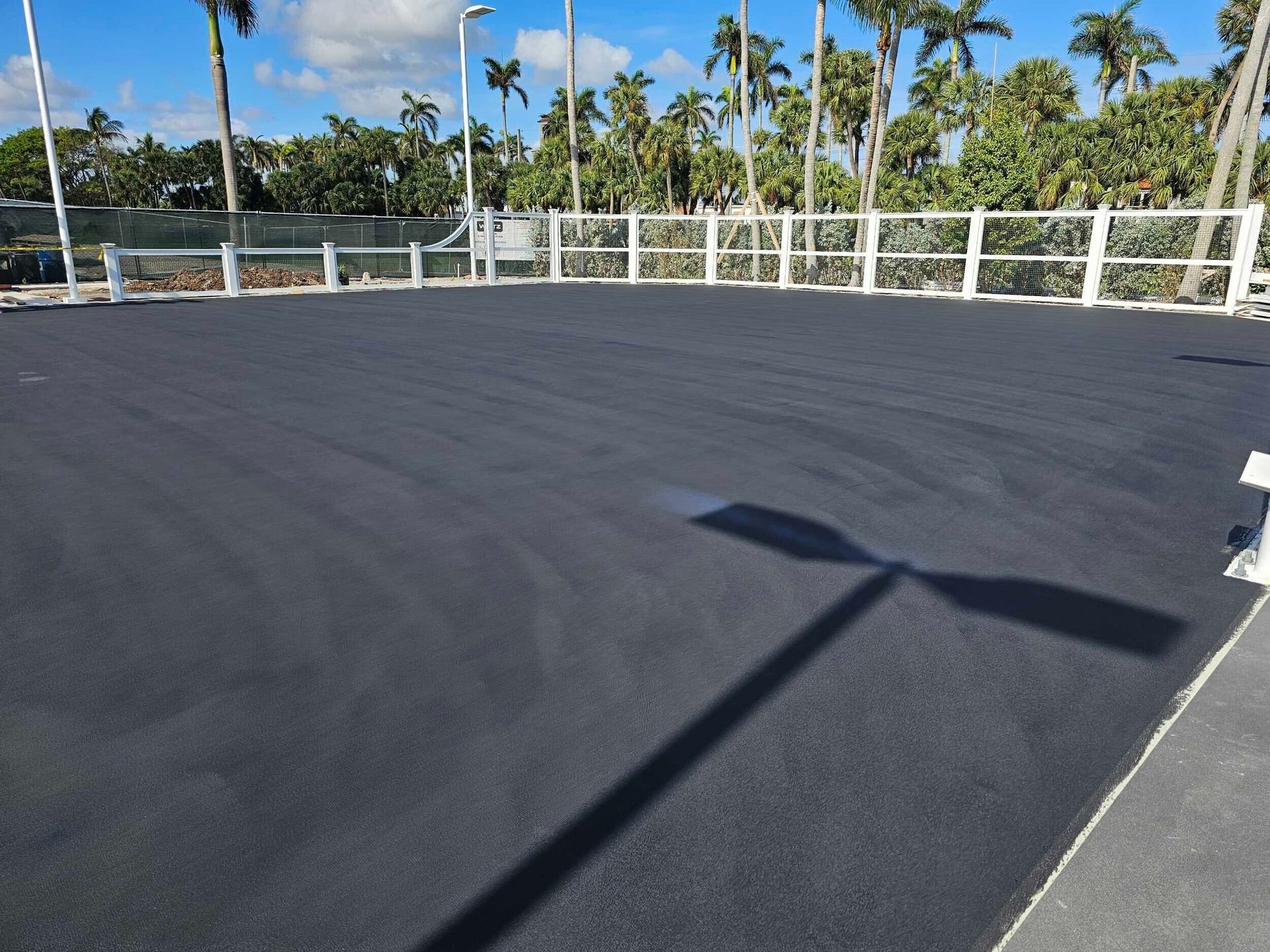
Snap-Together Plastic Tiles
Snap-together plastic tiles are a modern alternative gaining traction in both indoor and outdoor court installations. These modular systems are typically laid over a concrete or asphalt base and are designed to provide better shock absorption and traction. They are especially popular in multi-use facilities that want to convert spaces for different sports throughout the year. The installation is quick, and the tiles can often be replaced individually if damaged.
Polyurethane
Polyurethane surfaces are almost exclusively used for indoor pickleball courts. Common in gymnasiums, health clubs, and sports centers, this type of flooring is poured over a concrete base and then coated with a cushioned, non-slip finish. The main advantage of polyurethane is its soft, joint-friendly feel. It offers a smooth, consistent bounce and excellent traction, making it suitable for players of all skill levels. It's also easy to clean and resistant to scratches or scuffs.
One downside is the cost. Polyurethane surfaces tend to be expensive to install and may require professional refinishing over time. Still, for indoor facilities seeking a premium, low-maintenance surface that supports high-volume use, polyurethane is a strong contender.
Clay or Grass
Clay and grass surfaces are less commonly used for pickleball and are not approved for regulation play. These surfaces may work for casual backyard courts or temporary setups but generally do not meet the needs of competitive players. Grass courts, whether natural or synthetic, can feel pleasant underfoot and are easy to install in open lawn areas. Clay courts offer slower play and a cooler surface in hot climates, but they require constant grooming, watering, and leveling, which makes them impractical for most installations.
Pickleball Court Construction Costs
Let’s talk numbers. Costs can vary widely depending on your location, the court type, and the materials used.
Key Cost Factors
When planning your pickleball court project, it’s important to understand the elements that contribute most to overall costs. Whether you’re building from the ground up or converting an existing space, the following factors will influence your budget and scope:
- Land ownership or prep
- Surface material (asphalt, concrete, etc.)
- Drainage and grading
- Net system (portable or permanent)
- Fencing and lighting
- Permits and local codes
- Labor and contractor fees
Estimated Cost Breakdown
The cost of building a pickleball court can vary significantly depending on factors like location, surface material, site conditions, and whether you're constructing indoors or outdoors. Additional features such as fencing, lighting, drainage, and amenities like shade structures or spectator seating can influence the final investment. If you're working with a limited budget, converting an existing tennis or basketball court into a pickleball court is often a smart and cost-effective solution.
While exact pricing varies by region and scope, the key to long-term success is working with professionals who understand pickleball-specific requirements. Contractors with sports surfacing experience can help you balance cost, performance, and durability. For more guidance, explore detailed planning resources from USA Pickleball.
Pickleball Net Systems and Accessories
Once your surface is complete, the next step is installing a reliable net system. The type of net you choose depends on how your court will be used and whether it’s a permanent installation or a shared, multi-use space. Beyond nets, there are also accessories that can elevate your court’s functionality and player experience.
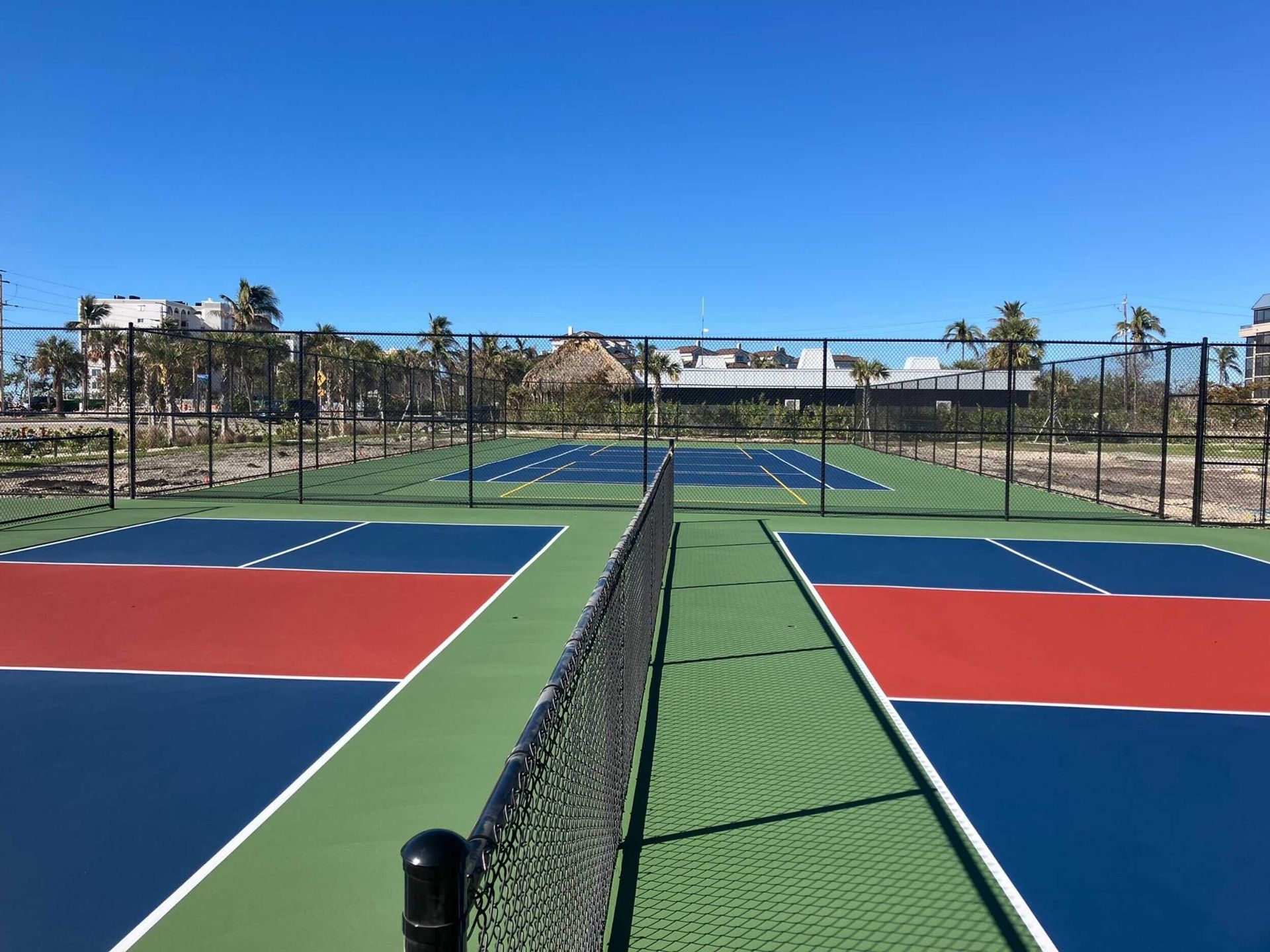
Portable Net Systems
Portable net systems are ideal for flexibility. They’re lightweight, easy to assemble, and perfect for spaces that serve multiple purposes. If you’re using a court in a gym, driveway, or shared park, this option makes it easy to set up and take down as needed. Just be sure to store the system indoors when not in use to avoid damage from the elements.
- Lightweight and easy to move
- Good for shared spaces or temporary courts
- Requires indoor storage to avoid weather damage
Permanent Net Systems
Permanent net systems are designed for long-term use and a more professional look. These are installed directly into the concrete or asphalt surface and provide greater stability and durability. They’re commonly used for club-level courts, parks, and dedicated pickleball facilities where the court is expected to get frequent use.
- Installed directly into concrete or asphalt
- Durable, professional appearance
- Perfect for dedicated pickleball facilities
Additional Accessories
Beyond the net itself, a range of accessories can improve usability and add convenience for players. These extras are particularly useful for training, organizing equipment, and improving the overall court experience—whether you’re playing casually or hosting a competitive match.
- Ball machines for solo training
- Ball baskets or collectors
- Gear storage (benches, hooks, cubbies)
- Scoreboards for competitive play
- Windscreens for breezy outdoor setups
These additions make your court feel complete and ready for anything, from drills and practice sessions to high-level tournaments. While not essential to start playing, they add value and functionality that most court owners eventually appreciate.
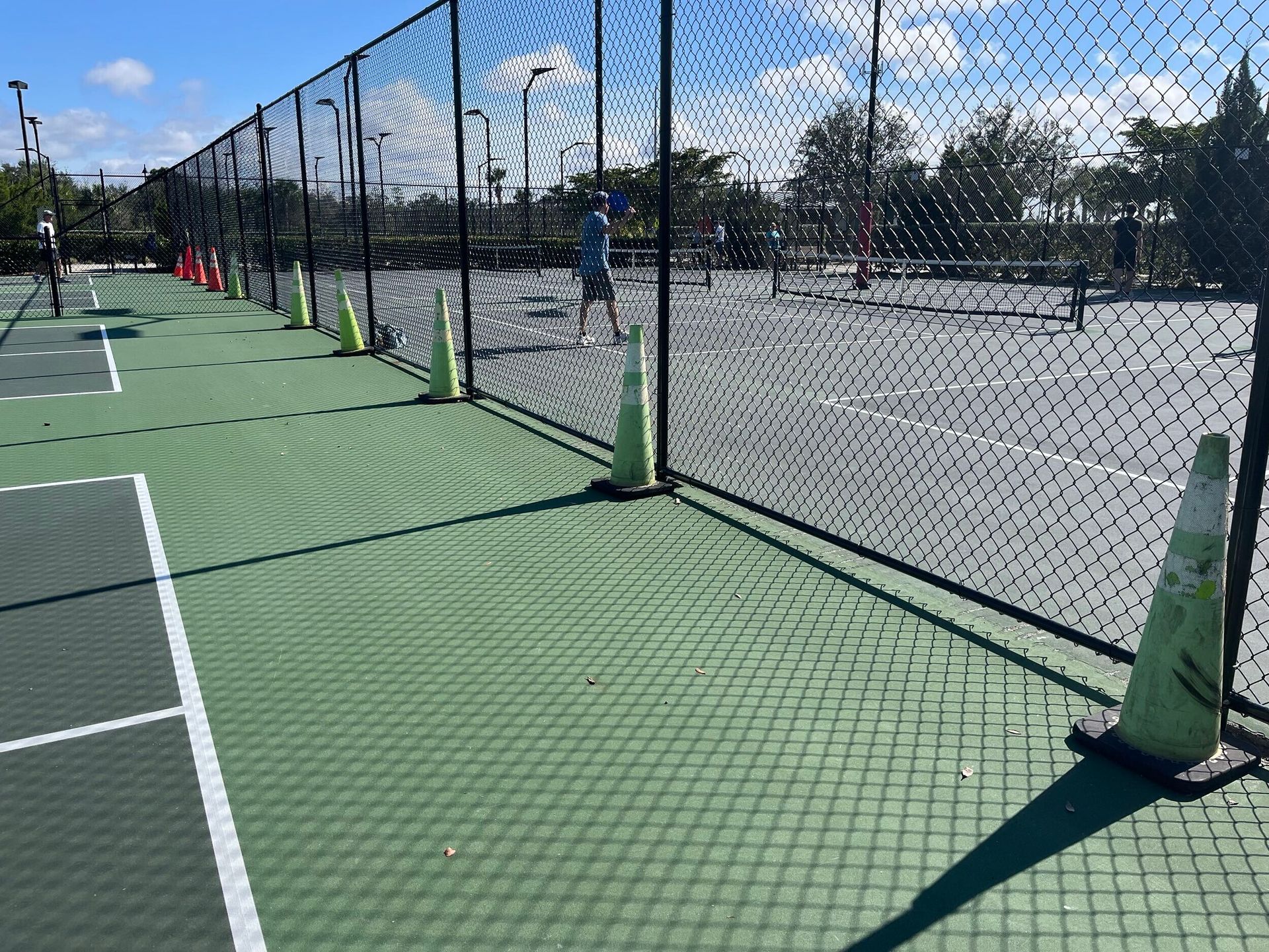
Fencing, Lighting, and Shade Structures
These features make the court usable, safe, and enjoyable year-round.
Fencing
You’ll want fencing around your court to:
- Keep balls from flying into nearby areas
- Protect spectators from stray hits
- Prevent unauthorized access
Lighting
If you want to play after dark or during winter months, you need good lighting.
- Install two lights per court for even coverage
- Light poles should be 18–20 feet high
- Place them at least 24 feet behind the court to avoid glare
Shade Structures
Shade is crucial in hot climates. It keeps players comfortable and prevents equipment damage.
Companies like USA SHADE offer custom-built canopies for recreational facilities and businesses. They’re also great for branding — you can match your court colors or add logos.
Converting Tennis or Basketball Courts to Pickleball Courts
Have a tennis or basketball court collecting dust? You can repurpose it into one or more pickleball courts — a smart and cost-effective way to bring new life to an existing surface. This is one of the most common approaches for parks, schools, and HOAs looking to meet growing demand without a full rebuild.
Here’s what you’ll need to get started:
- Measuring tape or court stencil
- Court paint or high-quality court tape
- Portable or permanent nets
One regulation tennis court (60’ x 120’) can fit up to four pickleball courts when laid out efficiently. Just make sure the surface is level, free from major cracks or damage, and properly cleaned before applying lines. You may need to resurface or repair the court if it shows signs of wear, especially if you're converting it for long-term use.
DIY vs Hiring a Contractor: What to Know
If you’re building your court from scratch — especially on raw or undeveloped land — hiring a professional contractor is strongly recommended. Projects that require grading, concrete pouring, drainage planning, or customized features like permanent lighting and fencing demand expertise that goes beyond the average DIY skill set.
How to Choose the Right Contractor
- Look for specialists in sports or court construction
- Ask for past work examples and references
- Confirm licenses and insurance
- Read online reviews
- Get detailed quotes with timelines
A trusted name in the industry is Mor Sports Group. They specialize in pickleball court construction, surfacing, and facility planning. Their team works with residential, commercial, and municipal clients to deliver courts that meet professional standards and long-term durability expectations.
From initial site assessment to surfacing, striping, and equipment installation, Mor Sports Group manages every stage with attention to detail. They also offer resurfacing services for aging courts and can assist in converting existing spaces into regulation-ready pickleball courts. For reliable, end-to-end support, they’re a proven partner in bringing pickleball projects to life.
Final Steps: Painting, Equipment & Grand Opening
You're almost there — it’s time to bring your court to life and make it playable, functional, and welcoming. These finishing details are what transform a construction project into a polished, player-ready space.
Line Painting
Accurate and visible court lines are essential for both recreational and competitive play. Regulation lines must be 2 inches wide and distinguishable from the playing surface. To ensure the best results:
- Use high-contrast colors (e.g., white on blue or green courts)
- Avoid line colors that match the color of your ball
- Mark the following areas:
- Baselines and sidelines
- Centerlines
- Service boxes
- Non-volley zone (kitchen)
For a clean and professional finish, consider:
- Using a stencil kit for consistent dimensions
- Hiring a professional with experience in sports court striping
- Prepping the surface with a sealer or primer before painting (especially outdoors)
Equipment and Launch
Once the court is painted and the net system is in place, it’s time to outfit your space with the right gear and amenities. At a minimum, your court setup should include:
- Quality pickleball paddles and balls
- A portable or permanent net system
- Benches or seating for players and spectators
- Water stations or hydration access
- Shade structures or umbrellas for outdoor comfort
- Secure gear storage (hooks, bins, cubbies, or cabinets)
To make the most of your new court, especially for shared or community use, you can also add:

- Windscreens for outdoor courts to reduce interference
- Scoreboards or signage for organized play
- Optional tournament brackets or branding elements
Once your space is ready, hosting a launch event is a great way to introduce your court to the community. Organize a friendly tournament, open play day, or clinic to draw interest. This not only generates excitement but also encourages regular play, fosters community, and helps establish your court as a valued local resource.
Conclusion
Pickleball isn’t just a trend. It’s a growing sport with staying power. With the right planning, materials, and team, your court can provide years of fitness, friendship, and fun. Now, grab your paddle, find your space, and build the ultimate pickleball court.
